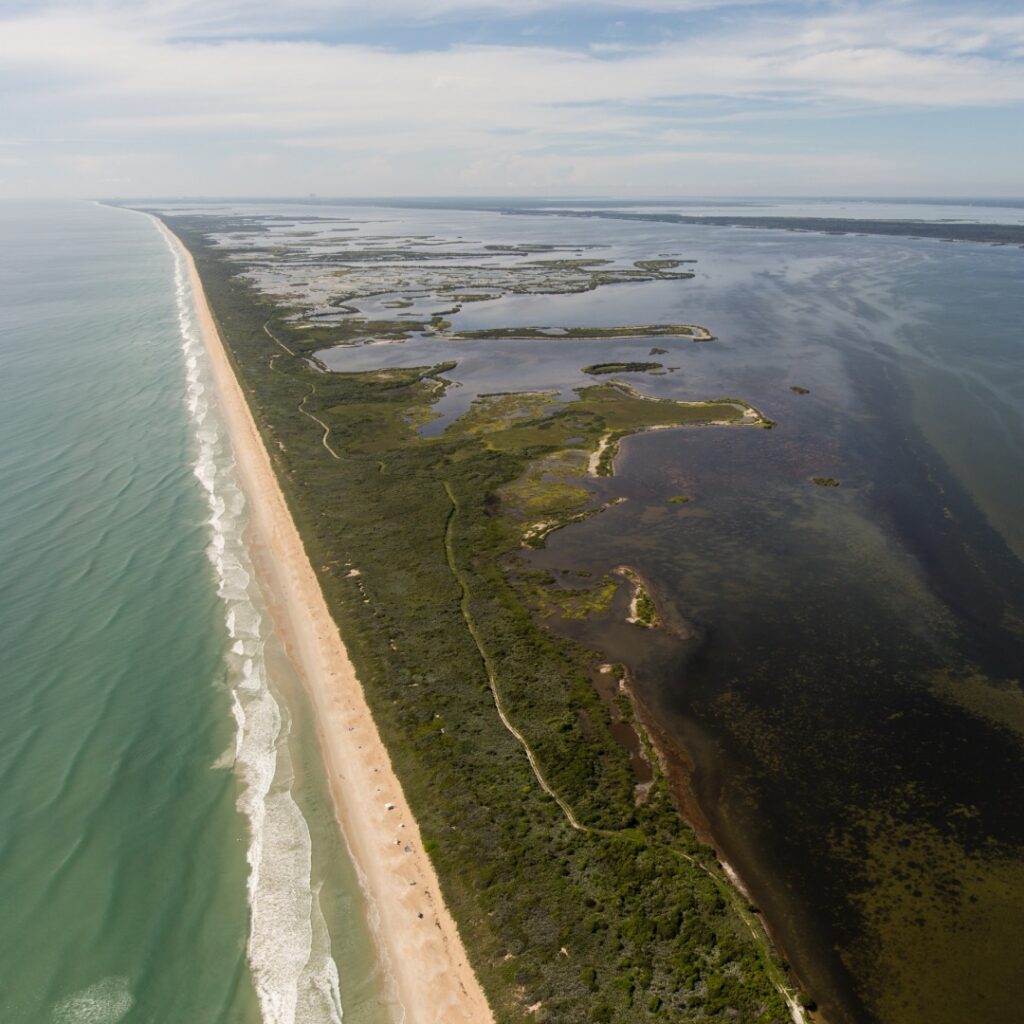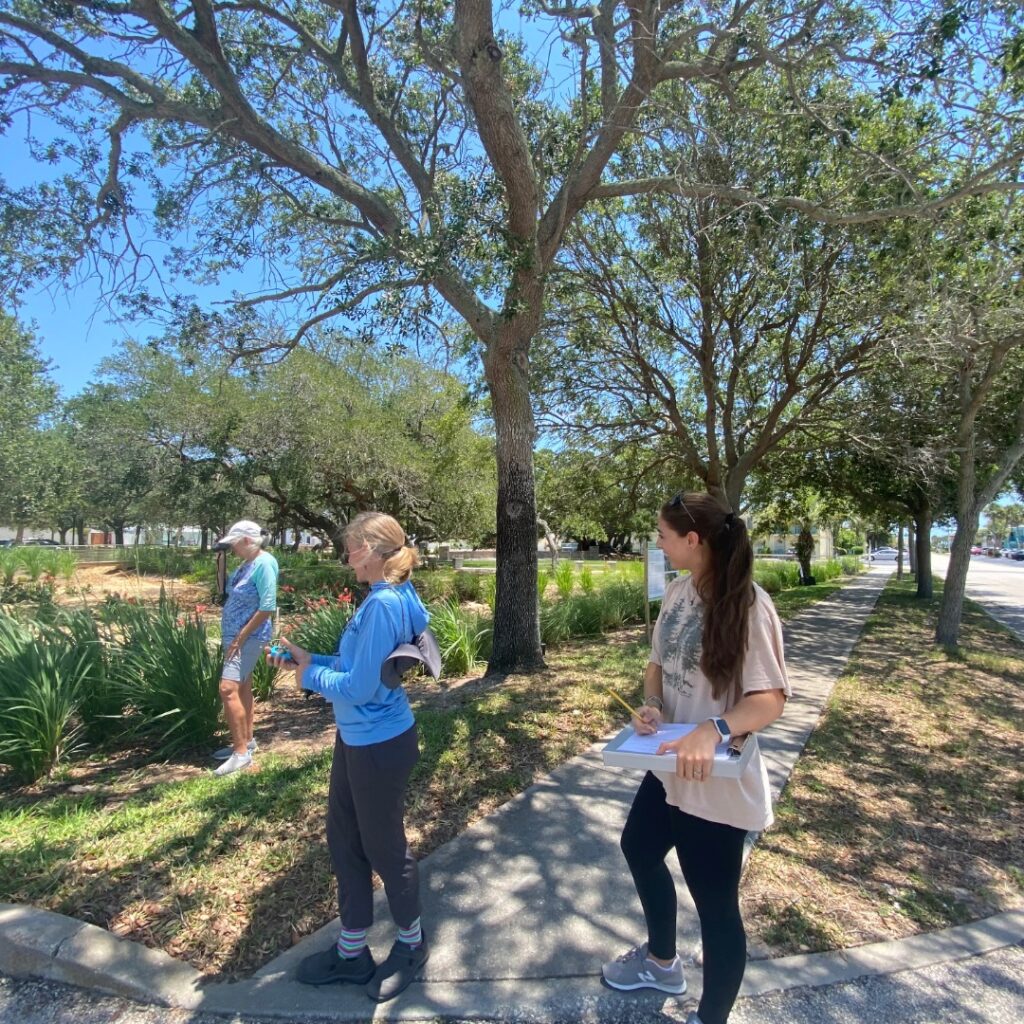Tides of Change: How Living in a Coastal Backyard Flooded My Interest in Green Infrastructure – Technologist
Sofia Cordoba is a Bachelor’s student in the Biology department at the University of Central Florida. Cordoba was selected as the first Florida Sea Grant Community Engaged Intern (CEI) for the 2024 year.
South Florida. Photo by Don Behringer
Throughout my entire life, I grew up in two different biomes; the sunny skies and sandy beaches of South Florida, and the biodiverse tropical rainforest of the Colombian Andes. Both places are so different yet so beautiful, opening up my appreciation for all of what Earth has to offer. After all, how can it be that two places on the same planet can be so different?
As a native South Floridian, I experienced firsthand the wonders of living in a coastal community. The beach was at my doorstep, and there were so many diverse communities of animals, ecosystems, and people.
Many visitors flock to South Florida each year to visit these beachfront destinations. These numbers are followed by an increase in infrastructure development, including high-rise hotels on the beach. As the popularity of my hometown increased as a vacation spot, so did the marine and beach litter, noise pollution, and much more. Seeing the once pristine beaches that I grew up playing and having birthday parties at, my interest was piqued by how coastal infrastructure impacts our coastal environment and vice versa.
Being an avid beachgoer, I conducted a research project for my writing class in high school to study how coastal infrastructure affects marine litter. Every month the club I founded at my high school – Wildlife Conservation Club – conducted beach cleanups at our local beach in Hollywood, FL. The trash we picked up was the way I gathered data for my project and concluded that more beach and marine litter was found in areas that were closer to the hotels located right on the beach. The main pieces of evidence were the branded cups and plastic silverware that were found in the sand right out front of the popular beachside hotels. From this study, I inferred that the location and proximity of infrastructure can impact nearby bodies of water.
Another challenge I’ve experienced in coastal living is flooding. Living in an urbanized center in South Florida increases flood risk compared to less developed areas. Development and the construction of canals have disrupted natural water management, leading to greater challenges with rising sea levels and insufficient stormwater systems. Recent efforts by local and federal governments aim to mitigate these issues, but the land’s reduced water absorption exacerbates flooding. However, these issues are not just prominent in South Florida. Areas on the east coast, such as Cape Canaveral, otherwise known as the Space Coast, are dealing with infrastructural challenges and stormwater runoff, associated with rising sea levels and greater rain and weather events.

The Atlantic ocean coast and the Indian River Lagoon. Photo by Tyler Jones, UF/IFAS.
During the space race, the city of Cape Canaveral was built as quickly as possible, from the mid-1950s until the early 1970s, with little planning for the future. Because of this, the stormwater drainage system designed and installed in the city has deteriorated as the years went by, causing major flooding in the community. This flooding not only affects Cape Canaveral residents but also contributes to the array of issues pressing the Indian River Lagoon (IRL), a shallow-water estuary stretching along 40 percent of Florida’s east coast. The matter of fact is that due to the poor drainage systems, whenever the area experiences heavy rainfall the streets flood and create runoff that then enters the Indian River Lagoon bringing possible phosphates and nitrates that cause harmful algal blooms.
These algal blooms create hypoxic conditions, which is when oxygen is depleted from the water in the lagoon, leading to the deaths of many submerged aquatic vegetation (SAV) species, such as seagrass, as well as the death of animals that consume these plants. The decline of SAVs from prolonged algal bloom conditions in the Indian River Lagoon (IRL) caused a starvation-induced mass mortality event among the native West Indian manatee population.
To mitigate the challenges associated with outdated drainage infrastructure and runoff, the City of Cape Canaveral and its partners are working to install bioswales, a type of rain garden designed to collect runoff. The plants and their roots function like a sponge, absorbing pollutants and enhancing water quality. This process helps reduce flooding risks and manage stormwater by diverting it away from vital infrastructure. It is an innovative way to help deal with the flooding as well as reduce the number of nutrients running off into the IRL.

First survey being conducted at the Bioswale in the city of Cape Canaveral. Image by Sofia Cordoba.
I was once a citizen concerned with what poorly designed and placed infrastructure can cause to our environment. Now, I am finding it makes the opportunities to engage with infrastructural solutions that can mitigate these issues.
As a Biology student at the University of Central Florida, with a focus on zoology and a passion for conservation and environmental sciences, I was excited to stumble upon the Community Engaged Internship with Florida Sea Grant. Every day I come into the UF/IFAS Brevard County extension office I find myself learning more and more about green infrastructure, the importance of community and teamwork, and the process of bringing an idea into fruition. I also derive significant satisfaction from actively promoting awareness about bioswales and their potential to address the flooding challenges currently affecting many coastal towns. As I become educated about the purpose of the bioswale, I become more fascinated with its history and purpose.
I find myself looking forward to my internship, as the nature of my work is so fascinating. Every day in the office, I get to ask questions to my mentor, Holly Abeels, and learn from her experience in the field. From the short time I have been working under her, I have learned about grant writing, research proposals, the scientific process behind a research experiment, and what it takes to get a community to support a project. Not only do I get to learn valuable knowledge, but I also get to have the creative freedom to support bioswales in communities like Cape Canaveral. I am helping translate data sheets, creating an online web course, and producing educational videos on how to conduct surveys on the bees and butterflies that are actively visiting bioswale sites. I hope that the Spanish-translated information can become more easily accessible to other areas that may benefit from implementing a bioswale in their community. The easier information can be shared, the higher the chance we can get the message of the importance and effectiveness of bioswales.
I feel very lucky to have been chosen to help contribute to this project that can hopefully, with the research being done, become a viable solution to be implemented in many coastal towns in the world. This whole experience has been nothing short of amazing, and I’m sure as the summer goes by it’ll only get better. It’s crazy to think how life works, I never thought the thing I would research for a high school paper would be in the likes of what I would be researching in college. Everything happens for a reason.
To learn more about the Cape Canaveral bioswale, tune in to next month’s blog where I will be discussing the research currently being done.



